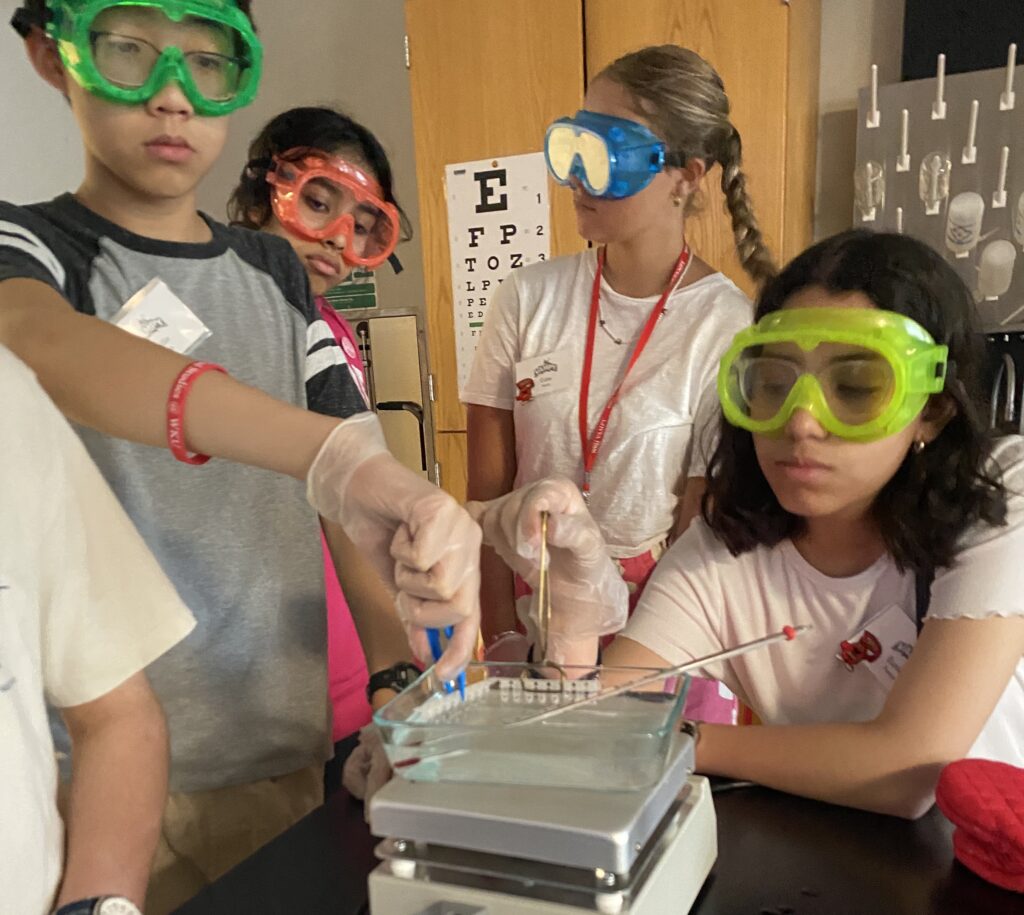 If you were to ask what a typical day looks like in the DNA & Genetics class, the most generalized statement would be an alternation of direct coursework and labs. However, every day, the content changes, the labs change, the equipment changes. Just like the life being studied, the life of the classroom adapts, but in this case to the needs and interests of the students. While some labs and lessons are core to the course, every year new things are introduced as students express their interests.
If you were to ask what a typical day looks like in the DNA & Genetics class, the most generalized statement would be an alternation of direct coursework and labs. However, every day, the content changes, the labs change, the equipment changes. Just like the life being studied, the life of the classroom adapts, but in this case to the needs and interests of the students. While some labs and lessons are core to the course, every year new things are introduced as students express their interests.
This year, students have experienced a plethora of content that ranges from introductory genetics to college level material. One major focus of interest has been on genes and the specifics of genetic mutation. To explore this further, students have watched a documentary with case files and complex social issues with intentional DNA editing, looked at mutant fruit flies under a microscope, discussed cancer, and even researched a specific genetic disease of their choosing and presented their research. This class empowers students to really become geneticists; they are constantly learning, researching, collaborating, and presenting.
DNA mutations are not the only focus of study, however! On Thursday, we had a lesson and tour of the electron microscope, where Dr. John Andersland of WKU also presented liquid nitrogen and dinoflagellates to students! We were able to look at the head of a tick under the microscope as well as use technology to determine which elements were present in the sample.
On previous days, we began the study of blood typing. (I actually used a kit to test my blood type. The students were disappointed when they did a lab with not real blood!). On another day students were able to build microscopes that fit onto their phone camera lens. We saw a lot of fascinating images! Students have done a taste lab and studied Mendelian genetics of corn, the pedigrees of queens, and blue people of Appalachia.
This has only been a handful of topics covered, but we still have so much left to learn! Students are improving proficiency in lab techniques and safety that will put them a head above the rest when they continue into their science courses and future research! Hopefully, this course ignites a passion in some students to continue studying the area of genetics and provides all with a new perspective on what makes us, us.
– Sarah A., teaching assistant
